Distance Vector Routing Algorithm 2
For Complete YouTube Video: Click Here
In this class, we will try to understand Distance Vector Routing Algorithm 2.
We have already discussed the first step of distance vector routing in our previous class.
In this class, we will understand the second step.
Distance Vector Routing Algorithm 2
The final routing tables obtained in our previous class are shown below.
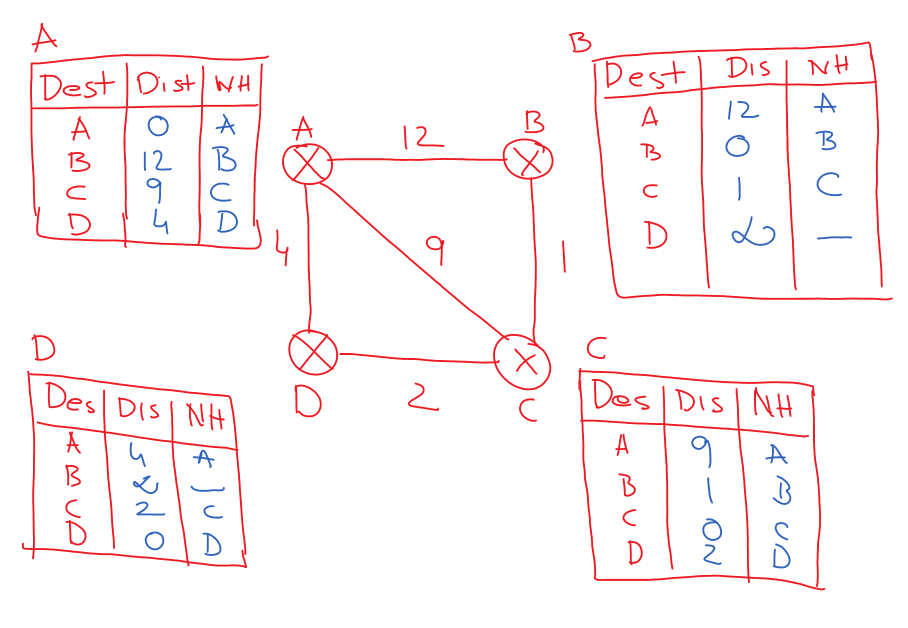
In the second step of the distance vector routing, each router will exchange its distances with the neighboring router.
For better understanding, we will consider only the router A and check how the routing table at A will get updated.
The image below shows the details on router A after sharing the distance vectors.

With the new details obtained from the neighboring routers, we will update the routing table at A.
The router A to B’s distance with the new distances is shown below.
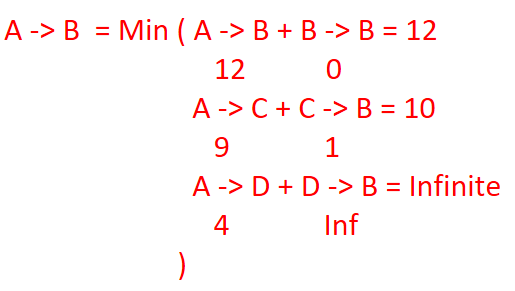
From the above possibilities, we have to consider the shortest distance.
In our case it from A->C + C->B = 10. The next hop is through C.
The router A to C’s distance with the new distances is shown below.
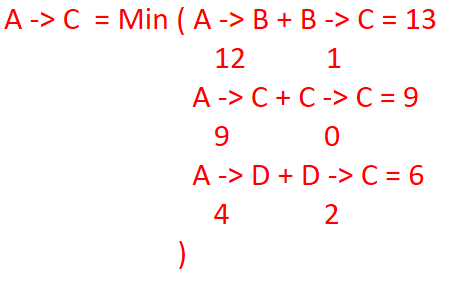
The shortest distance is from A->D + D->B = 6. The next hop is through D.
The router A to D’s distance with the new distances is shown below.
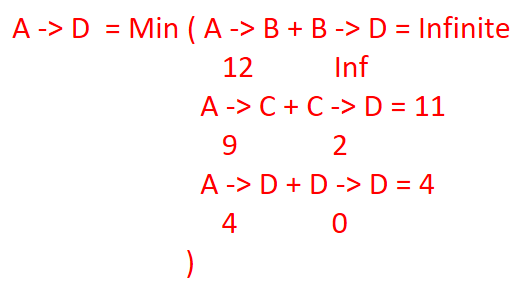
The shortest distance is from A->D + D->D = 4. The next hop is through D.
The new updated routing table at A is shown below.
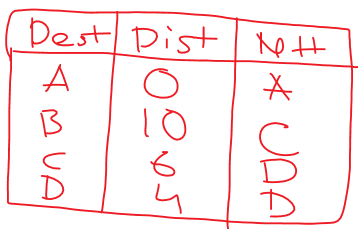
The number of times the second step iterates is n – 2 times. The value of n is the number of routers.
